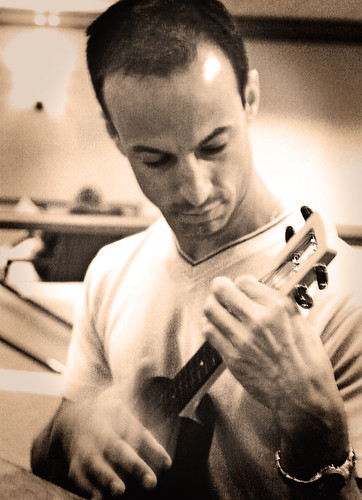CALÇOTS, TAKE ME AWAAAAAAY!
1.jpg)
I’d drive halfway across Spain for a good calçotada. In fact, that’s exactly what I did last weekend.
The infamous Marta and her cuddly parents hosted a calçotada at their Tarragonese beach house on Saturday. And it was faaaabulous!
What? You’ve never heard of a “calçotada?!” Don’t feel bad. There are plenty of Spaniards who are equally clueless. But that’s why I’m here—to keep my readers well-educated and well-fed. So sit back, grab a glass of something purple, and start taking notes—because Calçots 101 is now in session.
A calçotada is, quite simply, a calçot barbeque. It's a phenomenon that takes place mainly in the Cataluña region of Spain’s north-east Mediterranean coast. There are four vital elements to a proper calçotada: a bunch of calçots, a hot grill, a bowl of Romesco Sauce and a bib.
Calçots (pronounced, cahl-SOATS) are thick, long, green onions that are grown in the Spanish/Catalan province of Tarragona. They look like scallions on steroids and Viagra®. Calçots are harvested each year during the first calendar quarter, when they are fat and firm. The calçots are rinsed to remove clinging dirt and dried. Now they are ready for…
…the grill! Calçots should be cooked on a wood or charcoal grill. They are charred until their exteriors are blackened and interiors are tender. After the calçots are removed from the grill, they are wrapped in several layers of newspaper—presumably to steam themselves so that the burnt skins will separate easily from the core.
Grilled calçots should be accompanied by a bowl of Romesco Sauce. This is another of Tarragona’s culinary gifts to the world. Romesco Sauce is a thick, coarse, reddish-orange sauce made (more or less) of dried red peppers, garlic, oil, salt, paprika, tomatoes, and bread crumbs or ground nuts.
When the calçots are grilled and the sauce prepared, it’s time to eat. This is the fun part—and not just for reasons of taste. Eating calçots requires a special technique that was undoubtedly inspired by frat boys eating goldfish—or vice versa. It’s clumsy, it’s messy and it looks ridiculous—but everybody in Spain does it.
Everybody, that is, except my father-in-law. He eats calçots the same way he eats bananas or chicken wings—on Lenox® china with a knife and fork.
But back to the technique. With one hand, grab the calçot’s burnt exterior at the bottom. With the other hand, grab a couple of the green stalks at the top—but only the stalks in the center; not those of the perimeter. Then—like a samaurai unsheathing his sword—give it a tug! The calçot’s tender, white core will pull out of its charred, fibrous exterior.
Dip the calçot’s core in the Romesco Sauce, tilt your head back, dangle it above your gaping mouth, drop it in and bite. Then remove your shirt and send it to the dry cleaner—unless, that is, you heeded my earlier advice about wearing a bib.
And there you have it! A brief primer on calçots, and the glories of calçotadas. As I mentioned, it’s a regional thing. If you want to try some, you’ll have to go to Cataluña. The Catalans consume pretty much all the calçots that they produce—leaving the rest of Spain (and the world) no choice but to survive on Burger King® onion rings.
.jpg)

.jpg)
.jpg)
1.jpg)
.jpg)
4.jpg)
9.jpg)
.jpg)

